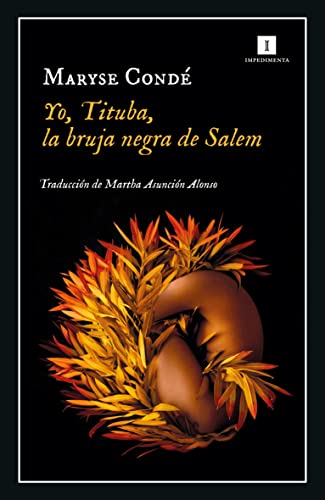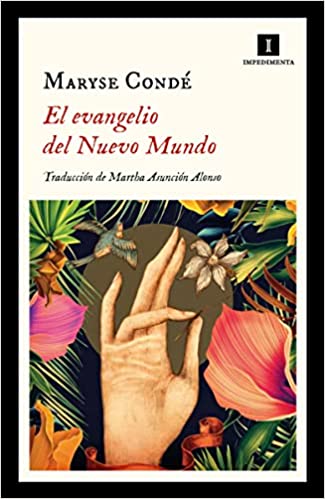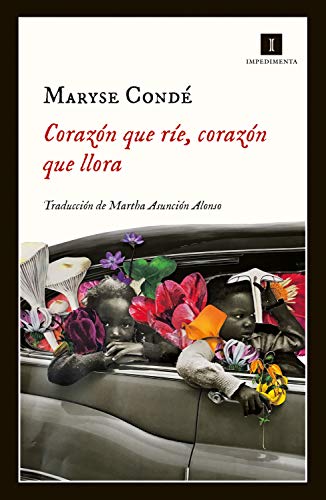The Caribbean writer Maryse Condé (I say Caribbean because pointing to her French condition due to colonial redoubts that are still in force, because that seems strange to me) made her literature, almost always in the key of historical fiction, an authentic theatrical setting where each of its characters declaims their truth. Intrahistories made angry certainties like soliloquies in the half-light. A claim that manages to achieve its doses of revenge with respect to official accounts or other chronicles that exile names that should occupy large pages.
All the stories made in Condé offer similar glimpses of the world in debt to one or the other. From the very figure of him in his outbursts of biographical overtones to the representation of any of his emblematic characters. Awareness from the authenticity that clears all possible doubts about how the events revisited by Condé happened, with the most intense doses of empathy to be able to relearn, if appropriate, History.
The bibliography with the stamp of Maryse Condé increased during her fertile 90 years. Both in volume and in recognitions and international reach. Because beyond genres more attached to pure fiction. Condé's life profiles also provide suspense from mere survival. Vivid plots towards the resolution that life itself offers with its hints of crudeness or unexpected splendor.
Top 3 best novels by Maryse Condé
I, Tituba, the witch of Salem
Surely the most delirious of the cases of historical machismo is that of the witch hunts repeated in half the world as a true misogynistic tic exacerbated under the umbrella of religion (you put it worse). On some occasion I wrote a fairly extensive story about the autos-da-fe of Logroño and I remembered in this story that same atmosphere of revanchism just because. Only this time the slave Tituba may become the witch that everyone feared the most...
Maryse Condé adopts the voice of the mystic Tituba, the black slave who was tried in the famous trials for witchcraft that took place in the city of Salem at the end of the XNUMXth century. Product of a rape aboard a slave ship, Tituba was initiated into the magical arts by a healer from the island of Barbados.
Unable to escape the influence of men of low morals, she will be sold to a pastor obsessed with Satan and will end up in the small Puritan community of Salem, Massachusetts. There she will be tried and imprisoned, accused of having bewitched the daughters of her master. Maryse Condé rehabilitates her, uproots her from oblivion to which she had been condemned, and finally returns her to her native country at the time of the Maroon blacks and the first slave revolts.
The gospel of the New World
A new God arrived in this world, made flesh to offer, perhaps, a second chance to the human being warned of his remote arrival. But today's man is disbelieved by the imperative of his deepest contradictions. God cannot exist beyond the churches as morality can only fit in an urn.
Early on an Easter Sunday, a mother walks the streets of Fond-Zombi and an abandoned baby cries between the hooves of a mule. As an adult, Pascal is attractive, mixed race without knowing where, and his eyes are as green as the Antillean sea. He lives with his adoptive family, but the mystery of his existence soon takes its toll on him.
Where are you from? What is expected of him? Rumors fly around the island. It is said that he heals the sick, that he performs miraculous fishing… It is said that he is the son of God, but whose? A prophet without a message, a messiah without salvation, Pascal confronts the great mysteries of this world: racism, exploitation and globalization merge with his own experiences in a story full of beauty and ugliness, love and heartbreak, hope and defeat.
Laughing heart crying heart
A natural exercise towards the story of any life contains that particular balance between the vital ingredients that fall to each one in luck or misfortune. In the case of Maryse, there is no doubt that the mix is what it is. Because idealization is a reflection in which to blur the bad moments, if one needs it. While realism is that testifying of one's passage through the world. And a writer like Maryse engaged in the most shocking testimony makes us laugh or cry with that same paradoxical sensation that points to Sabina about Chabela Vargas.
It is not easy to live between two worlds, and the girl Maryse knows it. At home on the Caribbean island of Guadeloupe, her parents refuse to speak Creole and pride themselves on being French through and through, but when the family visits Paris, the little girl notices how white people look down on them. .
Eternally straddling tears and smiles, between the beautiful and the terrible, in Rilke's words, we witness the story of Condé's early years, from his birth in the middle of Mardi Gras, with his mother's screams mingling with the drums. from carnival, to the first love, the first pain, the discovery of one's own blackness and one's own femininity, the political awareness, the emergence of the literary vocation, the first death.
These are the memories of a writer who, many years later, looks back and plunges into her past, seeking to make peace with herself and her origins. Deep and naive, melancholic and light, Maryse Condé, the great voice of Antillean letters, explores her childhood and her youth with moving honesty. A masterful exercise in self-discovery that constitutes a key piece of all her literary production, which has earned her the 2018 Alternative Nobel Prize for Literature.



